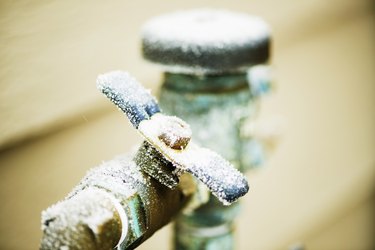Just how do you actually feel with regards to 6 Ways to Prevent Frozen Pipes?

Cold weather can damage your plumbing, especially by freezing pipes. Right here's exactly how to prevent it from happening and what to do if it does.
Introduction
As temperatures drop, the danger of frozen pipelines boosts, potentially bring about expensive repair work and water damage. Understanding how to prevent icy pipelines is vital for property owners in cold climates.
Avoidance Tips
Shielding at risk pipelines
Cover pipes in insulation sleeves or make use of warm tape to safeguard them from freezing temperature levels. Focus on pipelines in unheated or external areas of the home.
Home heating strategies
Keep interior areas effectively heated up, specifically areas with plumbing. Open closet doors to permit warm air to distribute around pipes under sinks.
How to identify frozen pipes
Look for decreased water flow from taps, unusual smells or noises from pipes, and visible frost on subjected pipelines.
Long-Term Solutions
Architectural adjustments
Think about rerouting pipelines far from outside walls or unheated locations. Add additional insulation to attics, cellars, and crawl spaces.
Upgrading insulation
Invest in premium insulation for pipelines, attics, and wall surfaces. Correct insulation assists keep constant temperature levels and decreases the danger of frozen pipes.
Securing Outdoor Pipes
Yard pipes and outdoor taps
Separate and drain garden pipes prior to winter months. Install frost-proof spigots or cover outside taps with shielded caps.
Understanding Frozen Pipelines
What creates pipelines to freeze?
Pipes ice up when subjected to temperatures below 32 ° F (0 ° C) for expanded periods. As water inside the pipelines freezes, it increases, putting pressure on the pipeline wall surfaces and potentially creating them to burst.
Risks and problems
Frozen pipes can result in water disturbances, building damages, and expensive repair work. Ruptured pipes can flooding homes and create substantial architectural damage.
Signs of Frozen Piping
Recognizing icy pipelines early can prevent them from rupturing.
What to Do If Your Pipes Freeze
Immediate activities to take
If you presume frozen pipes, keep faucets open to ease pressure as the ice thaws. Make use of a hairdryer or towels taken in hot water to thaw pipelines slowly.
Conclusion
Avoiding frozen pipes needs positive steps and fast reactions. By recognizing the causes, indications, and safety nets, property owners can protect their pipes throughout winter.
5 Ways to Prevent Frozen Pipes
Drain Outdoor Faucets and Disconnect Hoses
First, close the shut-off valve that controls the flow of water in the pipe to your outdoor faucet. Then, head outside to disconnect and drain your hose and open the outdoor faucet to allow the water to completely drain out of the line. Turn off the faucet when done. Finally, head back to the shut-off valve and drain the remaining water inside the pipe into a bucket or container. Additionally, if you have a home irrigation system, you should consider hiring an expert to clear the system of water each year.
Insulate Pipes
One of the best and most cost-effective methods for preventing frozen water pipes is to wrap your pipes with insulation. This is especially important for areas in your home that aren’t exposed to heat, such as an attic. We suggest using foam sleeves, which can typically be found at your local hardware store.
Keep Heat Running at 65
Your pipes are located inside your walls, and the temperature there is much colder than the rest of the house. To prevent your pipes from freezing, The Insurance Information Institute suggests that you keep your home heated to at least 65 degrees, even when traveling. You may want to invest in smart devices that can keep an eye on the temperature in your home while you’re away.
Leave Water Dripping
Moving water — even a small trickle — can prevent ice from forming inside your pipes. When freezing temps are imminent, start a drip of water from all faucets that serve exposed pipes. Leaving a few faucets running will also help relieve pressure inside the pipes and help prevent a rupture if the water inside freezes.
Open Cupboard Doors
Warm your kitchen and bathroom pipes by opening cupboards and vanities. You should also leave your interior doors ajar to help warm air circulate evenly throughout your home.

I'm very inquisitive about How to Prevent Your Pipes From Freezing and I hope you enjoyed my blog post. Appreciated our piece? Please share it. Let others check it out. I appreciate your readership.
Call Today